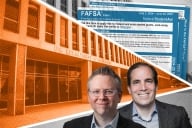You have /5 articles left.
Sign up for a free account or log in.
Last fall, with support from the ECMC Foundation, SeaChange made a grant to help facilitate partnership discussions between Mills College and the University of California, Berkeley. Last week, Mills approved a merger … with Northeastern University.
Does this mean the grant was a failure? Our answer is an unequivocal no. In fact, we’d suggest just the opposite.
In our experience as grant makers that have supported all sorts of nonprofit mergers and partnerships, an initial discussion that does not move forward is sometimes a necessary precursor to one that does.
Regardless of the level of institutional soul-searching, reflection or self-assessment, a real-world discussion with a potential partner forces an institution to assess its strengths, weaknesses and nonnegotiables with candor. It gets the attention of any less than fully engaged trustees hoping that things will magically sort themselves out without the need to make decisions. An initial discussion can also help set realistic expectations about an institution’s range of options. Finally, a discussion -- if public or quasi-public -- may bring other interested, and perhaps unexpected, partners out of the woodwork. In this case, that was Northeastern University.
This is not to suggest that it makes sense for an institution to start a “stalking horse” discussion it does not expect to move forward solely in the hope that it leads to one that does. Rather, it provides an extra reason for institutions to be open to exploratory discussions. It also underscores the importance of starting early enough to give the exploratory process time to take natural twists and turns before the clock runs out.
The possibility that a subsequent discussion might turn out to be a better fit should also make institutions wary of agreeing to confidentiality or exclusivity agreements that limit their ability to engage with subsequent partners on a timely basis. Strong institutions that care about all students (not just their own) must push back if their overzealous lawyers suggest that they impose these restrictive conditions on weaker brethren.
Returning to Mills, we are pleased with the outcome. While a Mills-Cal partnership might have been attractive, the deal with Northeastern looks even better. This raises a question: Better for whom?
Seven overlapping but distinct groups of constituents are affected by any meaningful partnership in higher education: current students, future students, past students (i.e., alumni), faculty, staff, the local community and funders. No partnership can be evaluated on an absolute basis, but only relative to the other options that may include the continuation of the status quo, a different partnership or a teach-out/dissolution. Each alternative will have different risks, rewards and uncertainties for the various constituents.
For institutions under duress, it would be remarkable if the disparate constituent groups had the same set of facts or agreed on the best way forward. It is natural for each group to evaluate the risks and rewards of a potential partnership from its own perspective; in fact, it’s part of what makes higher education partnerships particularly complex. Nobody can expect the residents of a college town to cheer if its namesake school decamps to a new location, even if they accept -- which they probably wouldn’t -- that the move was “better for students.”
It is the responsibility of trustees to make hard choices. It is their duty to evaluate -- in a way that no other constituent group can -- the range of feasible options based on a dispassionate consideration of the facts. They alone have legal responsibility (and in some cases, liability) for making the call. Other constituents may believe that trustees have made the wrong decision, but there can be no disagreement that it is their decision to make.
The Mills-Northeastern merger looks attractive for the most important stakeholders: current students, faculty and staff. Despite the heartfelt opposition of some alumnae, the trustees appear to have made a good decision. But as with all complex decisions, only time will tell.








